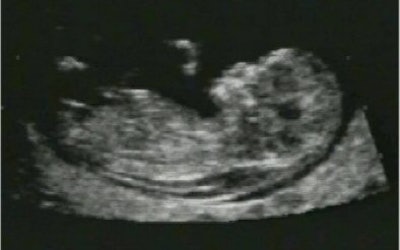
No pregnancy is complete without an ultrasound exam. But as average maternal age increases and with it the risk of fetal abnormalities, the combined use of ultrasound and biochemical markers in screening is providing some answers to anxious mothers.
In a presentation at the Ninth South Asian Regional Conference on Clinical UltraSonography in Practice (CUSP 2004), Dr Kevin Spencer, consultant biochemist at Harold Wood Hospital in Romford, U.K., and director of biochemical screening at the Fetal Medicine Foundation (FMF) in London, made a case for using maternal age in conjunction with biochemical screening, nuchal translucency (NT) thickness, and sonographic markers to detect chromosomal abnormalities in the fetus.
"Biochemistry can be combined with nuchal translucency to make a very good screening programme," Spencer said.
Spencer illustrated his point with findings from a retrospective study involving 1,000 controls and 210 T21 cases (Ultrasound in Obstetrics & Gynecology, April 1999, Vol. 13:4, pp. 231-237). Researchers found the detection rate for common chromosomal disorders such as Down syndrome, or trisomy 21 (T21), showed a marked improvement when NT was included with the biochemical screening, increasing the overall effectiveness of the test. The detection rate was 67% with a false-positive rate of 5% when biochemical screening alone was done. With NT the detection rate improved to nearly 90%.
Biochemical screening and NT
Biochemical screening is based on the increase or decrease in concentration of certain fetoplacental products in maternal circulation. Both biochemical screening and NT have individually demonstrated their capability in fetal screening through separate studies.
A study with a population of 67,904 between 1991 and 1998 had 107 cases of T21, and biochemical screening using alpha-fetoprotein (AFP) and free beta-human chorionic gonadotropin (FBhCG ) detected 80 of the cases, resulting in a detection rate of 75% with a false-positive rate of 5% (British Journal of Obstetrics and Gynaecology, December 1999, Vol. 106:12, pp. 1287-1293).
However, gestational age is an important factor to be considered when screening. Marker levels vary with gestational age, and can either decrease or increase depending on the marker. For instance, AFP increases with age while FBhCG decreases.
On the same lines, pregnancy-associated plasma protein A (PAPP-A) levels, which are low in the first trimester of T21 pregnancies, become normal in the second trimester. Hence, PAPP-A is a good indicator of T21 in the first trimester, but of no value in the second trimester, Spencer explained.
The reference point to measure whether a marker level in a pregnancy is normal or abnormal is the multiple of the median (MoM), the concentration of the marker that is measured in the pregnant patient divided by the median expected concentration for a normal pregnancy of the same gestational age. T21 pregnancies typically show lower-than-normal AFP and higher HCG in the second trimester.
Like maternal serum markers, NT also varies with gestational age or crown-rump length (CRL), and should therefore be considered with those factors. For a given CRL, the larger the NT, the higher the risk of abnormality.
 |
| NT/CRL measured on ultrasound is one of the factors determining the risk of abnormalities such as trisomy 21. Image courtesy of Dr Eva Pajkrt, University of Amsterdam. |
In one of the largest NT studies in the world (326 T21 cases in 100,311 women with 96% follow-up), 72% of T21 cases had NT above the 95th percentile. When combined with maternal age for screening, NT had a detection rate of 77% with a false-positive rate of 5% (The Lancet, August 1998, Vol. 352:9125, pp. 343-346). A number of other studies have confirmed the effectiveness of NT in screening, but controversially, a significant number have also demonstrated poor detection rates.
For the studies with poor detection rate, Spencer attributed a lack of standardised measurement criteria and appropriate training of sonographers. The Fetal Medicine Foundation has specified the standard and procedure for training and measuring NT, he said.
In an example presented by Spencer at the conference, incorrect calliper placement and a resulting change in NT from 1.5 mm to 2.9 mm altered the risk from 1:100 to 1:600.
One-stop clinics
Pioneered by the FMF in 2001, one-stop clinics for assessment of risk (OSCAR) offer all screenings, including biochemical screening, in a single visit for patients. Spencer, who has published a paper on point-of-care screening for chromosomal abnormalities in the first trimester of pregnancy (Clinical Chemistry, March 2002, Vol. 48:3, pp. 403-404), said the key development that made this possible was rapid assay technology for biochemical marker measurements.
These desktop analysers enable rapid assay times of 19 minutes. Patients can obtain a composite risk report based on the results of the NT/CRL ultrasound scan, as well as the PAPP-A and FBhCG screening of the blood sample, within an hour of entering a clinic for pretest counselling.
By offering the risk assessment at a single appointment, "Patient satisfaction is maximised by reducing the number of patient visits and minimising patient travel costs, anxiety, and stress," Spencer said.
By N. Shivapriya
AuntMinnieIndia.com staff writer
October 1, 2004
Copyright © 2004 AuntMinnie.com



















